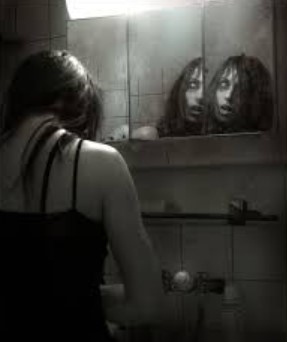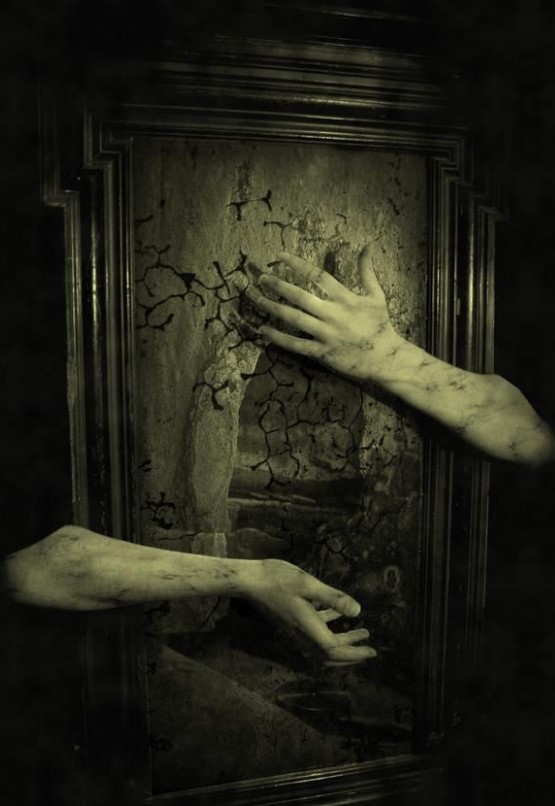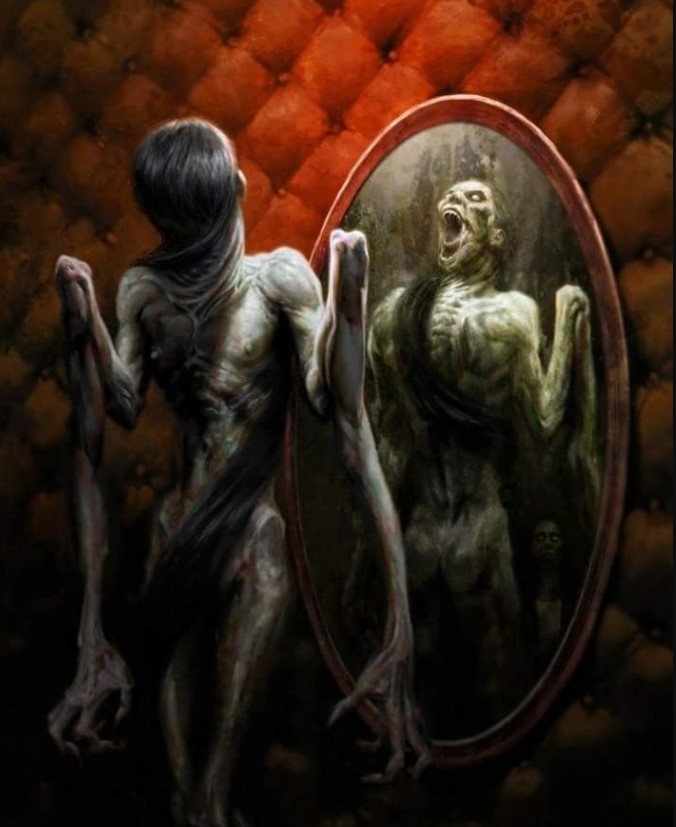Psychomanteum – it’s a word most of us aren’t acquainted with, and a bit of a mouthful, right?. Yet you’ll wonder why, given the whole new world that opens up to you once you read up about this millennia-old version of mirror gazing.
So yes, it involves a mirror, set in a room dedicated to getting in touch with departed loved ones. Such an experience is reported to be of great comfort for anyone in the throes of grief. It is also of interest to researchers in the field of esotericism.
If you’re itching to learn more about what exactly psychomanteum is, how it is practiced and who it’s for, be our guest and get stuck in to these few lines.

Fast forward through the past of psychomanteums
A bit about Raymond Moody
Psychomanteums have been around for a long time. Through the ups and downs of history, they made quite a comeback in the late twentieth century, landing you on this page today. If there is one thing only you should heed about its history, it’s got to be Raymond Moody’s contribution.
A psychology professor at the University of West Georgia amongst other chairs he held in the United States of America, Raymond Moody stated that ‘for many centuries in ancient Greece there were psychomanteums, or oracles of the dead, where people journeyed to consult with the spirits of the deceased.’ The definition had got to be his, because he his the main authority on the matter.
Now if Raymond Moody doesn’t ring a bell, then for sure the phrase ‘near-death experience’ does. So you were aware of Raymond Moody’s work after all… he’s the one who first coined this phrase, later to shed light on his whole life’s work. Hence why psychomanteums are back in the spotlight.
Paul Perry and Raymond Moody co-authored the 1994 book ‘Reunions: Visionary Encounters With Departed Loved Ones’ to share the simple principles underlying this powerful technique. The aim of their work was to bring to the most people possible the soothing effects of a psychomanteum situation when facing loss.
Raymond Moody also has his own psychomanteum of course. It is located in Alabama at the John Dee Memorial Theatre of the Mind. This brings us to another mammoth contributor when it comes to psychomanteums: John Dee.

A bit about John Dee
Once an advisor to Queen Elizabeth I, this Anglo-Welsh astronomer conducted extensive research in the field of scrying. Oh dear, another outlandish word. Actually, it’s precisely that, with scrying being the act of using a suitable medium in order to communicate with other-worldly bodies.
So together with his research fellow Edward Kelley, John Dee set up the perfect psychomanteum. Lights dimmed and a mirroring surface near a window, facing away from the participants’ gaze but reflecting a feeble light. The objects of choice were either an obsidian stone with its shiny, black look lending itself to mirror gazing or a quartz crystal, known also for its use to enter the spiritual world.
This way, Dee and Kelley communicated with angels, reaping messages of love and wisdom as well as revelations. Dee carefully recorded such encounters, including his interpretation of the angelic language which he called Enochian.
Sometimes, members of the high society would gather around Dee and Kelley during sessions and try their hand at scrying. If for the majority of people this was a successful technique, it was also a very personal experience. Imagine having your own mind enact a play in front of your eyes. That’s right, Moody’s aptly-named Theatre of the Mind.
From the Mayas to the Inquisition
As early as 1800 BC, Mayas practiced scrying. On the other end of the world, the ancient Greeks were also well versed in necromancy, or the art of communicating with the dead. In fact, nearly all peoples have practiced it in some form. Native Americans, Tibetans, Europeans…
And this is how things panned out in Europe. Any interest the higher society may have had in this field, it was nearly completely wiped out by the Roman Inquisition. John Dee himself only narrowly escaped paying the ultimate price for his practices. In such a context of fear, little to no room was left for publication and circulation of new esoteric findings. Dee’s writings only survived through cautious passing on amongst private circles of passionate scholars and benefactors.
Despite this challenging climate, some great legacies made it beyond the Inquisition and live on to this day. Nostradamus famously penned ‘The Prophecies’, predicting future apocalyptical events with the help of a psychomanteum setting. Nostradamus applied this special room to the art of reading the future, also called catoptromancy. There too, the use of a mirror or reflecting object is central.
From reading into the past, the future to receiving angelic messages and visitations from the deceased, a psychomanteum is a multi-faceted tool. Because anyone can learn from the experience, it begs the question, what exactly are its advantages and what’s the right way to proceed?
Why and how to use a psychomanteum
Appeasing grief’s most painful thorns
The underpinning of a successful outcome for scrying is the receptiveness of the participant to achieve an altered state of being. This can be measured by the Tellegen Absorption Scale. This elaborate indicator was devised in the 1970s to measure a person’s absorption level and likelihood to enter altered experiences.
But why try out scrying in a psychomanteum, if it’s only your own mind deviating from its usual course and showing you images of your unconsciousness? The reason is all but esoteric. It has a proven healing factor.
Dealing with grief is a personal endeavour and one that will not gain from being short-circuited. Great, because this is not what scrying is about. It’s more to do with the quality of grief, so you can find solace in feeling connected with your departed loved one through this type of communication. The sense of reality experienced in a psychomanteum situation enables you to feel the presence of your loved one. It won’t bring them back, but it will allow you to make peace with your sense of loss. Knowing there is a dedicated room you can go to and relate to the person you miss is a relief to many.
A 2002 study entitled ‘Psychomanteum Research: Experiences and Effects on Bereavement’, took participants through three steps before concluding to the effectiveness of the use of psychomanteum practices in dealing with grief. A pilot study had taken place with five participants at first before the full-scale study was launched. This time, it involved twenty-seven participants.
First, the participants were asked to recollect their loved one. Then they were invited to take part in a session of scrying while thinking of the deceased. Last, they got to share their views on the experiment. They were handed questionnaires to fill out before and after the session as well as a Myers-Briggs personality test and Tellegen Absorption Scale indicator. This enabled the twelve researchers to assess the outcome of each individual experience, depending on the base state of consciousness and personality of each person.
This research established the direct link between the use of a psychomanteum and the ability to move the lines of grief from negative feelings to positive results. The researchers listed significant improvements regarding common grieving issues such as unresolved feelings, loss, guilt and need to communicate.
Seeing is believing, and the belief alone was evidently enough. As little as the altered state of reality with the deceased lasts, it fulfils the need to make proper goodbyes and receive some more guidance from the departed loved one. All this is accessible not just to near-death experiences but to anyone who wishes to concentrate on this surreal happening.

So how do I get started?
Conditions are fairly easy to set up. You need to prepare a dimly-lit room, with a reflective surface, say a mirror, and a comfortable chair. The mirror should be placed in such a way that you can look in it without seeing your own reflection. It should mirror some low lighting that will preferably be placed at the back of your armchair so it does not interfere with your absorption.
The more effectively you can summon memories of the deceased, the more likely you will be to experience visions and communicate with them on a level purely attributable to parapsychology. Take a look at photos and videos of them and view them from the comfort of your psychomanteum, maybe with some appeasing music to help you relax. Take as long as you need. There is no right or wrong when it comes to feelings.
When you are ready, dim the light and gaze into the mirror. Breathe calmly and let images come to your mind through the mirror in front of you. Raymond Moody noted that the visions themselves are very short, usually only a minute long. This is especially true if it’s your first attempt at communicating with a departed loved one.
If nothing happens – on the surface – this is ok. Moody pointed out that for the few people who don’t get to experience any visualisation during the session, a message from the deceased generally comes to them in some other way or form in the days or weeks following the experience. You don’t even need to keep faith in anything happening for the miracle to operate. Moody highlighted that it’s the detachment from the whole event that seems to spur on later paranormal occurrences.
How do psychomanteums and near-death experiences relate?
Is there a similarity between the two types of experiences one can go through, namely a near-death experience and a session in a psychomanteum? The short answer is yes. They are both perceived as real and carry meaning long after they end. As such, and having gone through a ‘NDE’ himself, Raymond Moody explored both types of events meticulously. His aim in using a psychomanteum was to replicate the insights a NDE brings.
Upon return from such an event, people often report having seen a deceased loved one welcoming them and their experience feeling like a higher type of reality. This is the fine line that Moody is interested in revisiting, by using a psychomanteum. His focus was as much on data collection as out of personal interest.
Indeed, a misdiagnosed thyroid condition literally drove him mad and he ended up attempting to commit suicide. The resulting near-death experience he went through prompted him to gather evidence on the subject. This being impossible under normal clinical conditions, Moody made the best use of psychomanteums to achieve his goal of research into communication with the deceased.
Psychomanteums today
Parapsychology will likely never cease to draw attention. Scholars and writers find an infinite source of inspiration from this topic, which occasionally steers them towards the mystical imagery raised by psychomanteums.
Lewis Carroll comes to mind, with his wonderful fiction ‘Through the Looking Glass’ that is travelling the centuries to delight young and old. But how fictive is this narrative? Moody reports rare incidences where the participant feels sucked in to the mirror that brings about visions as if this other-wordly reality was surrounding them entirely. Isn’t this what happens to Alice in Carroll’s story? Carroll made it his business to exploit the blurred lines between fiction and reality to make for great reading.
More recently, J.K. Rowling threaded a psychomanteum into her best-selling Harry Potter books. It features in the fantasy setting of Diagon Alley, inside the mirror-making shop Janus Galloglass.
Parallels that no one had foreseen are beginning to emerge. Hypotheses are compelling. The dark screens of our most modern technology devices may serve as a tool for practicing scrying when they are turned off. Could these be used inside a psychomanteum? Or are they solely the product of what our fascination for reflective surfaces has echoed for centuries? Are screens a new tool in a very primitive search for the afterlife? These are all valid points that deserve more attention and more recognition.
Your journaling of your own psychomanteum experience can add to the common knowledge and quest for a calmer, more meaningful world – or worlds.
Other interesting reads that you may like:




Leave a Reply